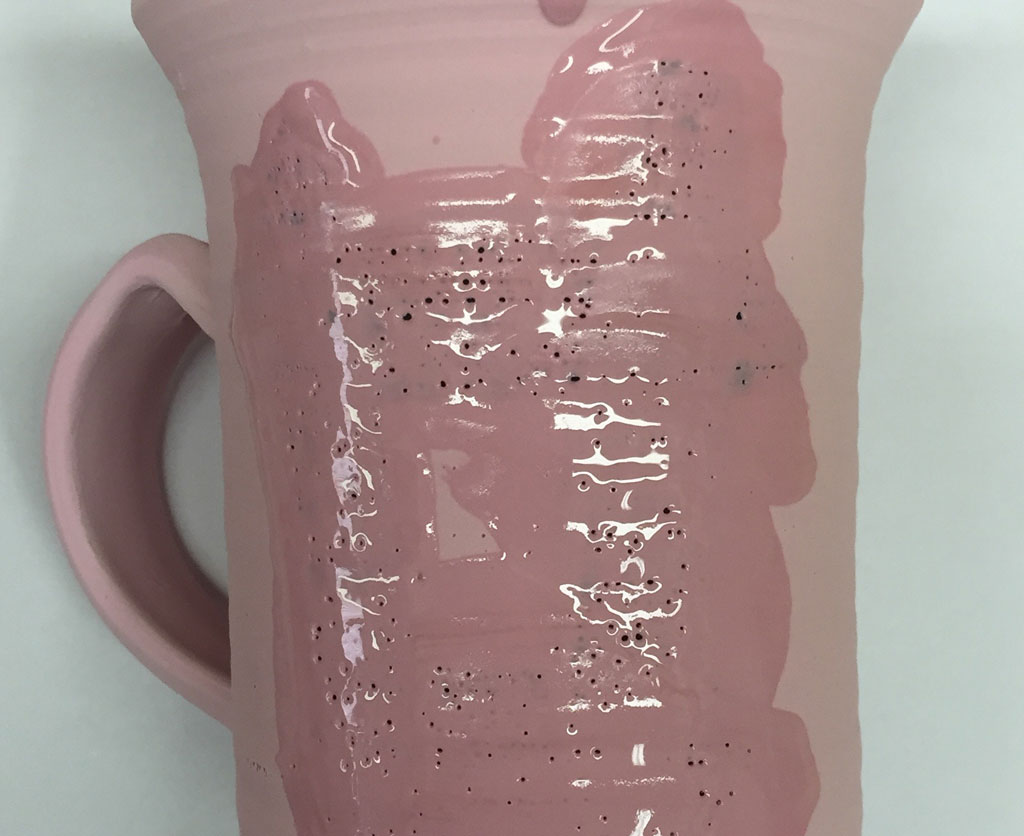| Monthly Tech-Tip | No tracking! No ads! | |
Underglaze decoration difficult to cover with clear overglaze
The underglaze was painted on to bisque ware (has not be fired on). This is a problem. It has a high gum content and has sealed the surface so the porous body underneath is unable to pull water out to dry it quickly. During the slow dry the little absorption that is taking place is generating air bubbles from below and these are producing bare spots. The solution is to either make your own underglaze having a lower gum content or decorate ware in the dry or leather hard stage so the bisque fire will neutralize the gum.
Related Pictures
Our own black underglaze better accepts the clear overglaze

This picture has its own page with more detail, click here to see it.
The commercial product has two serious issues. First, it is just not covering well enough, to get jet black requires three or four coats. Second, it is intended for transparent brushing glazes over top - dipping glazes do not cover well over it, even when the underglaze is bisque fired (upper left). By contrast, our own black (90% MNP, 10% Nepheline Syenite, 10% black stain, 1.5% CMC gum, 5% bentonite) overglazes perfectly (upper right). And one brush stroke almost covers enough (we later settled on 15% stain).
Videos
Links
| Glossary |
Underglaze
An intensely pigmented highly opaque non-melting ceramic material mix meant to adhere best to leather hard pottery and fire-fit the body. Often transparently overglazed. Starter recipes. |
| Materials |
CMC Gum
CMC gum is indispensable for many types of ceramic glazes. It is a glue and is mainly used to slow drying and improve adhesion and dry hardness. |
Got a Question?
Buy me a coffee and we can talk

https://digitalfire.com, All Rights Reserved
Privacy Policy

